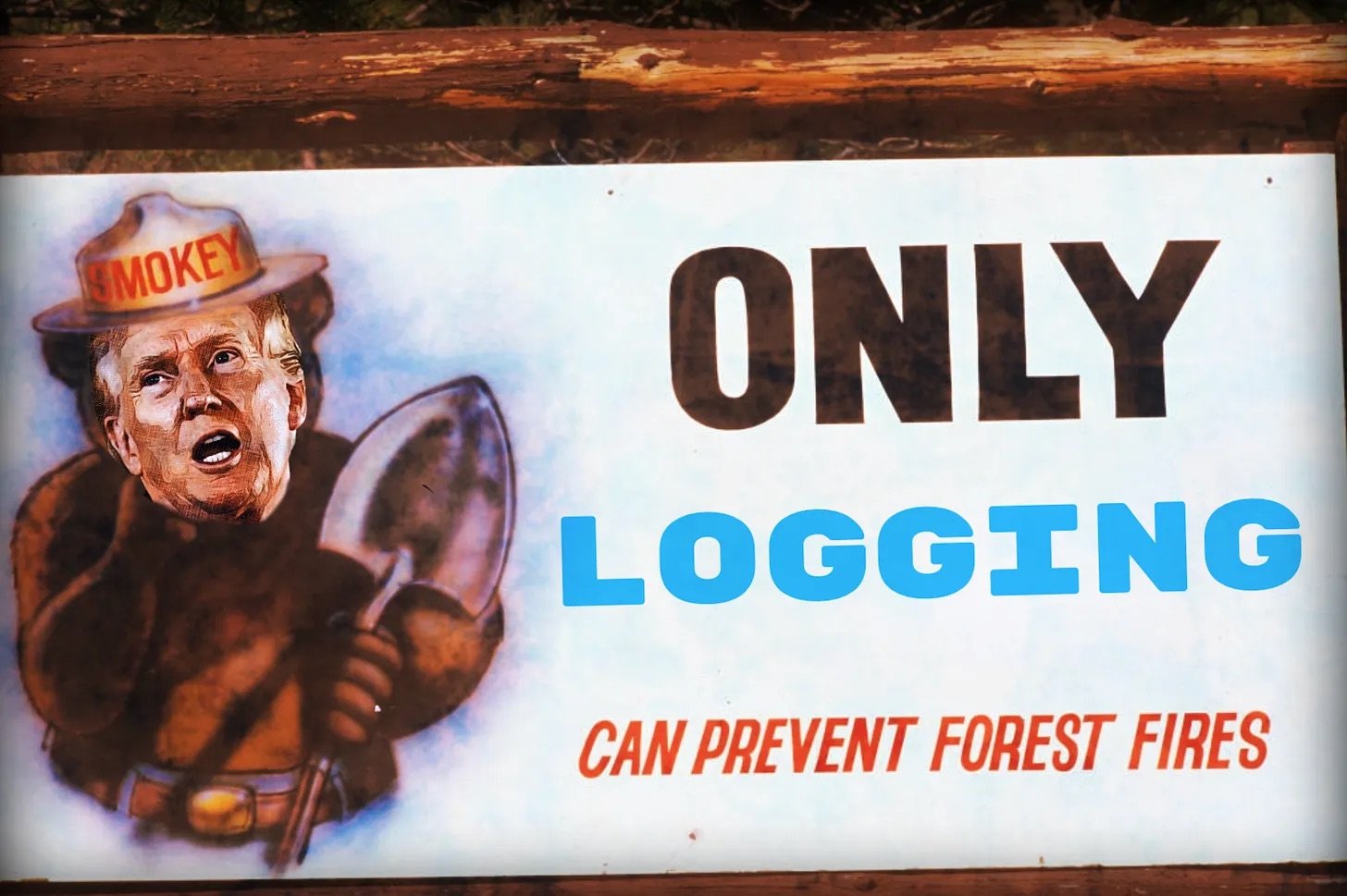The MAGA plan to stop forest fires: Remove the forest



Project 2025 plans to increase commercial logging to fight wildfires. Ecologists and fire experts say this will make fires worse.
As the world continues to burn fossil fuels, the climate crisis has pushed wildfires into unnatural “megafires” that consume millions of acres in a single season. This year’s wildfire activity is nearly 3,000 percent higher in California than last year; and within the next three decades, one in seven homes could be at major risk. More concerning is the threat to human lives; last year, the deadliest wildfire in over a century killed 102 people in Maui; and much of the East Coast experienced its worst air quality ever because of Canadian wildfires.
But MAGA Republicans have put together a plan that they say will help ease the wildfire crisis. It’s laid out in Project 2025, a more than 900-page document published by conservative think tank the Heritage Foundation.
In a brief section easily missed, the authors detail an overhaul of the U.S. Forest Service, the federal agency charged with managing wildfires on public lands. Currently, the Forest Service is implementing a 10-year strategy to reduce wildfire risk, which includes science-backed methods like prescribed burns, tree thinning, and pruning.
But under the Project 2025 plan, these wildfire prevention strategies would be heavily stripped down, and primarily focused on one: making it easier for companies to cut down trees and sell them.
Saving the forests by cutting them down
Mitigating climate change is not part of Project 2025’s wildfire plan. That’s no surprise: The author of Project 2025’s wildfire chapter, Heritage policy research fellow Daren Bakst, is a policy advisor for the Heartland Institute, one of the most notorious climate denial think tanks in Washington.
The only wildfire problem Project 2025 purports to solve is the problem of dangerously dense forests. According to the Forest Service, “forests are overstocked, with too many trees growing far too close together. This overgrowth affects forest health and the ability to withstand drought, pests, diseases and wildfire.”
To address this, Bakst writes that the Forest Service “should focus on proactive management of the forests and grasslands that does not depend heavily on burning,” rejecting the Indigenous-backed practice of controlled burns.
The management strategy Bakst focuses on instead is increasing timber sales, which he writes could “play an important role in the effort to change the behavior of wildfire because there would be less biomass.”
To speed up logging, Project 2025 says that the Forest Service needs to “reduce regulatory obstacles…created by the National Environmental Policy Act and the Endangered Species Act.” In other words, environmental and wildlife protection regulations must be weakened, as reviews are slowing down the removal of wood that could otherwise be sold. Project 2025 explicitly rails against protections for the northern spotted owl, a fight that has raged between the timber industry and environmentalists for over 30 years.
Other chapters in Project 2025 propose to repeal President Joe Biden’s logging restrictions in Alaska’s Tongass National Forest, which is the world’s largest temperate rainforest; and to open public lands in Oregon and California “to ensure that timber is ‘sold, cut, and removed’”, in part to ”ameliorate the effects of wildfires.”
While Trump has tried to distance himself from Project 2025, his past actions show alignment with this strategy. In 2018, then-President Trump signed an executive order loosening logging regulations in federal forests in order to prevent wildfires. A few years later, when wildfires forced hundreds of thousands of people on the West Coast to evacuate, he blamed the states for poor forest management. In 2020, Trump opened 9 million acres of the Tongass National Forest to logging and road construction.
Theoretically, cutting down trees to stop wildfires does make some sense. “If you remove the forest, there's not going to be a forest [to] burn,” said Erica Smithwick, an ecologist and climate scientist at Penn State.
But only focusing on logging is not a responsible wildfire management strategy, seven ecologists and fire management experts told HEATED. In fact, they said, it’s almost certain to make wildfires worse.
“Treating forests just as lumber, and not as ecosystems”
Commercial logging can be part of a good wildfire prevention and management strategy. But the keyword is “part.” According to experts, many other major strategies must be included in any effective wildfire management strategy: including prescribed burns—otherwise known as “planned” wildfires.
Project 2025’s explicit rejection of prescribed burns doesn’t make sense, said Leda Kobziar, professor of wildland fire science at the University of Idaho. “There are hundreds of reasons why fire is beneficial and necessary,” she said. “Indigenous peoples have long been aware of this reality, and lived effectively with wildfire for tens of thousands of years.”

